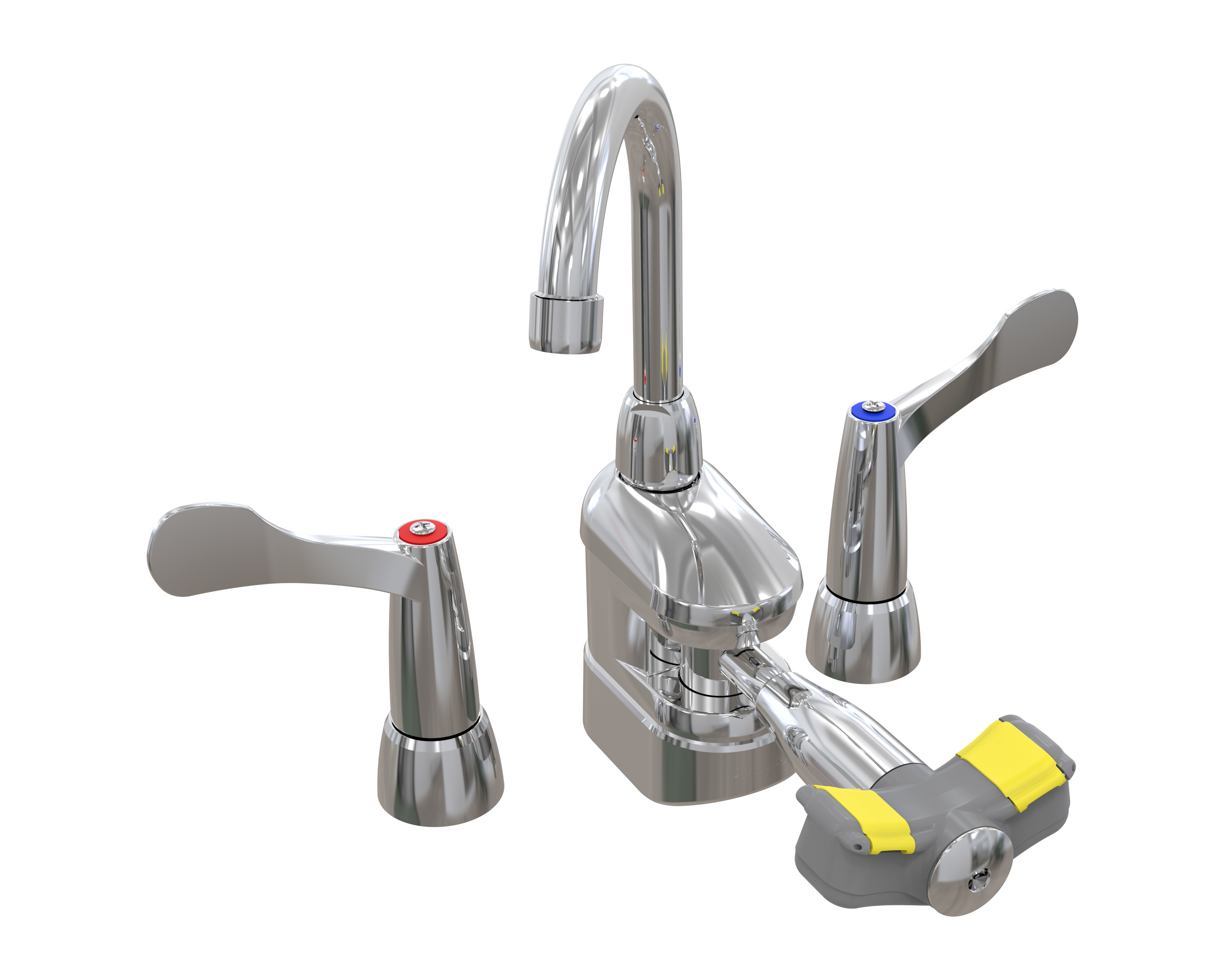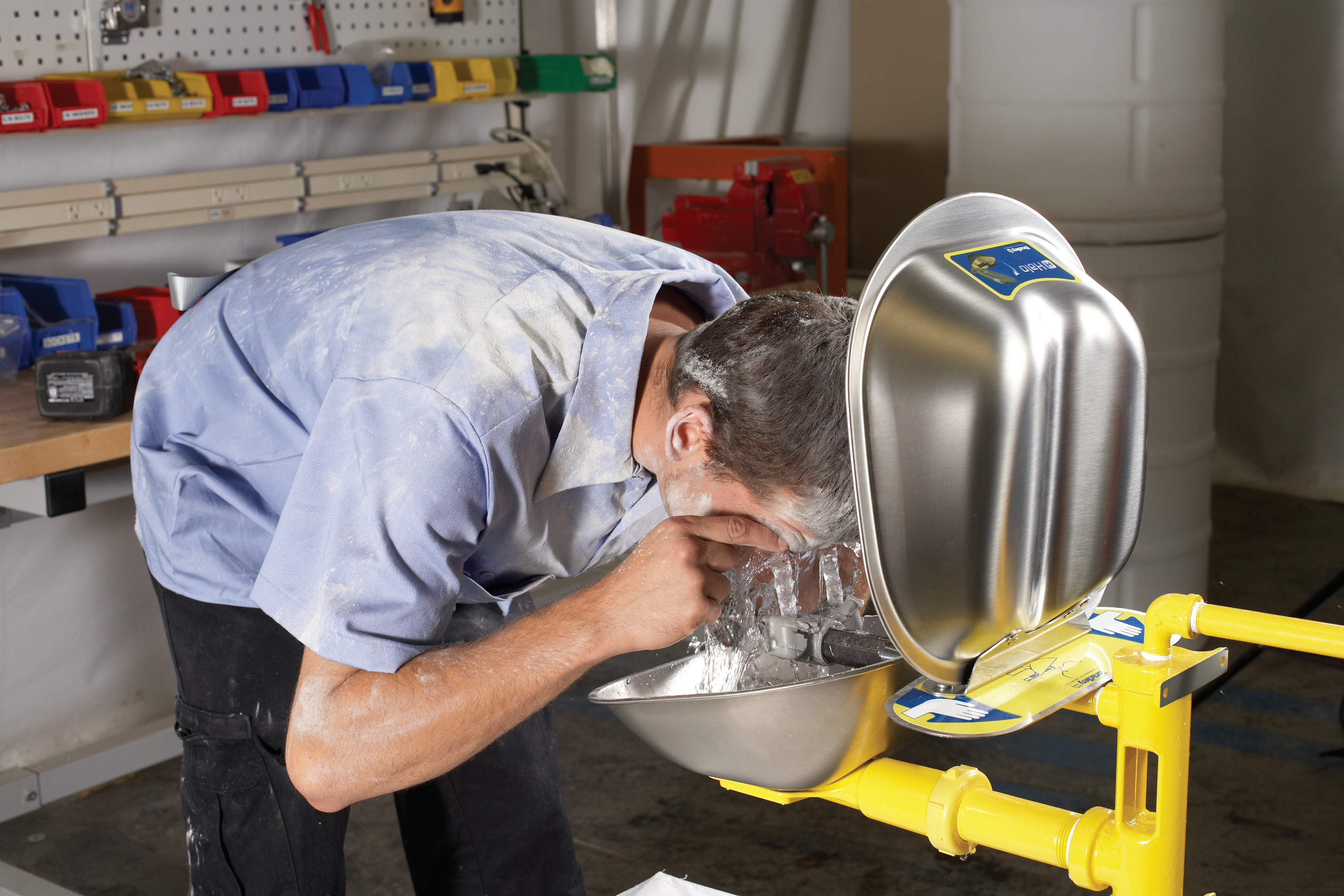As we gradually enter the post-pandemic era, providing dependable health and safety protocol for employees and building occupants is top priority. As part of any building’s safety plan, preparing facilities with properly plumbed emergency eyewash equipment is a key safeguard that should not be overlooked.
Emergency eyewashes are crucial in commercial settings involving any type of chemical, flammable and particulate hazards. These environments include industrial settings, indoor/outdoor worksites, laboratories in health-care and educational facilities, research and development applications, restaurant kitchens, carpentry shops — the list goes on.
The risk of worksite injury is a reality that all these types of industries must address. According to the United States Bureau of Labor Statistics, Nonfatal Occupational Injuries and Illnesses Requiring Days Away from Work (2014):
- 13,840 workers were afflicted by chemical exposures in 2014.
- 46,000 workers experienced exposure to harmful substances or environments.
- More than 23,000 workers suffered injuries to eyes.
Therefore, it’s important to keep up-to-date on the placement and maintenance of emergency eyewash equipment, as well as the newest trends and technologies. Evaluate whether your equipment is effectively optimizing the best protection for its employees and occupants.

ANSI/ISEA Z358.1–2014, American National Standard for Emergency Eyewash and Shower Equipment, requires that tepid water be delivered to emergency fixtures, encouraging an injured party to complete the full 15-minute flush during an emergency. ANSI/ISEA suggests an incoming water temperature between 60 F and 100 F (15.6 C and 37.8 C).
Know Your Hazards and Emergency Eyewash Options
To begin the selection process of emergency shower and eyewash equipment, start by identifying potential hazards in a particular work setting. Safety data sheets for hazardous substances should be carefully reviewed to ensure the proper protection and safety plan is in place to protect the workers.
Eyewashes and eye/face washes, as well as drench showers, should be selected based on the type and level of potential exposure to workers and how many individuals could be affected. Potential hazards may include dusty conditions, hazardous chemicals and flammable materials.
-
Emergency eyewash stations
- Effective for spills, splashes, dust or debris likely to affect only the eyes.
- Provides a controlled flow of water to both eyes simultaneously.
- Delivers an uninterrupted, 15-minute supply of tepid water. Plumbed units can supply a greater volume of water available, between 2 and 5 gallons (7.5 and 19 liters) per minute.
-
Emergency eye/face wash stations
- Used when the entire face is at risk from spills, splashes, dust and debris.
- Irrigates the eyes and face simultaneously.
- Provides a large distribution pattern of water (minimum 3 gpm/11.4 lpm) to rinse the entire face effectively.
-
Drench showers
- Used when larger areas of the body are at risk.
- Flushes a larger portion of the body but is not appropriate for the eyes (a combination eyewash and drench shower may be used to simultaneously flush the eyes and rinse larger areas of the body).
Ensuring the Best Washdown Coverage
When harmful contaminants reach the delicate eye area and extend to the outer portions of the face or contact the body, every second counts. Therefore, evaluating the amount of total face and body coverage provided by the eye/face wash or shower is key.
The newest generation of emergency fixtures is designed to deliver a more uniform and complete spray pattern distribution. Older shower designs push the flow of water to the outer rim of the showerhead, creating a hollow space in the center of the pattern that can miss affected areas.
Using the latest technology in fluid dynamics, new eyewash designs work in tandem with pressure-regulated flow control and the spinning motion of water, which creates an optimal spray pattern to rinse off contaminants as quickly and thoroughly as possible. The contoured shape combined with the spinning water funnels the water into a concentrated yet gentle deluge to ensure the most effective flush available.
Modern eye and eye/face wash models use a much more accurate method to maintain the flow of water over varied pressures. With the right flow control, a gentle, noninjurious flow of water can be delivered based on the pressure supplied to the fixture, allowing for minimal variance across a wide range of pressure.
Due to advances in fluid dynamics technology, newer eye/face washes provide 20 percent better protection than other designs.
For facilities such as laboratory environments, a new generation eyewash model combines a sink faucet with a built-in eyewash for emergency eyewash use, offering a convenient space-saving solution.
During regular faucet use, the eyewash is stored out of the way. In an emergency, the eyewash is activated when it is swung out 90 degrees over the sink. Simultaneously, it moves the faucet out of the way and immediately stops water flow to the faucet.
This unique two-in-one design ensures that the faucet can be used as desired. However, when the eyewash is required, it will be in the optimal position over the sink, keeping water contained in the sink without water dripping or spraying on countertops.
Avoiding Contamination of Equipment
As we move beyond the COVID-19 pandemic, it’s important to keep eye/face wash systems clean and bacteria-free. One of the newer eye/face wash models comes equipped with a self-draining design that eliminates any settled water in the system. This model also incorporates separate supply and waste pipe to prevent cross-contamination from the clean inlet and wastewater.
Sometimes stagnant water is left from false activations, tampering and other misuse by workers, leaving equipment vulnerable to contamination. While facility managers can avoid these issues by installing an eyewash alarm system, newer eyewash designs come equipped with either plastic or stainless-steel bowl covers to shield the entire bowl from misuse and contamination.
Some eyewash systems use a sturdy plastic see-through hinged bowl cover. The see-through plastic allows for quick and easy visual inspection, and the hinging mechanism provides a more secure hold. The covers open as the fixture is activated and may be installed on barrier-free fixtures.
While selecting proper emergency eyewash equipment is crucial, workers must ultimately be knowledgeable about the location of the fixtures and how to use them properly. Some emergency equipment manufacturers offer free jobsite evaluations to help with product selection, ANSI/ISEA compliance and training to enhance protection for all.





